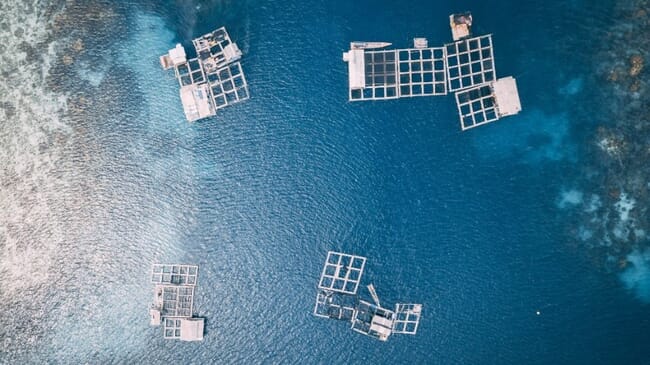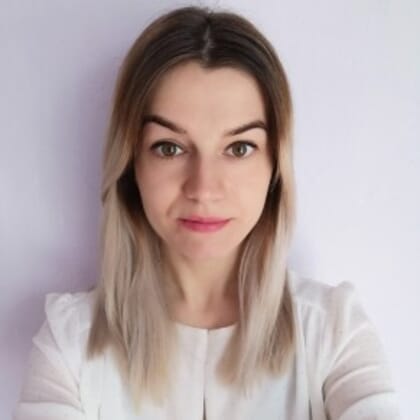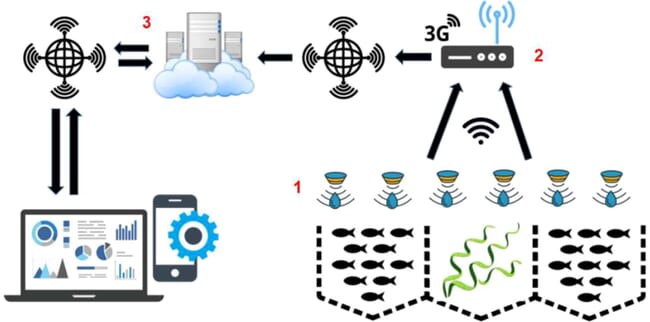
The ADO platform was designed to meet the needs of small- and medium-sized aquaculture operations that want to adopt digital technology © Hason Lu
UOC researchers launched the ADO project in 2019 to install low-cost electronic sensors to monitor pH levels, temperature, turbidity and oxygen levels in a number of farms in Catalonia, Spain (in Baix Montseny, Pla de Lleida and Terres de l'Ebre). As part of the ADO project, researchers Ioana Cristina Suciu, Guillem Boquet and Pere Tuset, together with the WiNE group leader, Professor Xavier Vilajosana, professors with the Faculty of Computer Science, Multimedia and Telecommunication, have published a scientific article on the development, use and implementation of the platform.
"ADO is a complete platform created to take into account the needs of small and medium-sized aquaculture enterprises that cannot afford the cost of industrial solutions," explained Suciu. "It includes hardware, software and a user interface – the three key components of a digital system – and is designed to collect data from various sensors and display them in real time." This data is displayed in various formats, numerical and graphical, with the option to activate alerts using certain parameters. This allows SMEs in the sector to monitor their facilities economically and effectively.
"The project uses the same general architecture as most of the available monitoring systems: sensor nodes, a server or local data storage solution and a web page or application to visualise the data," she said.
The difference lies in the communication protocol, the design of the user interface, the number of sensors and the final cost. She also noted, however, that, "we are taking this project a stage further: our solution is designed to allow secure connections, integrated panels, the option to download data and the control and calibration of the sensors in real time. We also supplied a complete configuration guide, with details on the final price and technical specifications."

ADO supplies a complete kit to allow aquaculture managers to digitalise their operations without technical expertise. "The resulting system meets the needs identified by the European Maritime and Fisheries Fund. Digitalisation means we can generate success through learning," said Ioana Cristina Suciu. "The manager of the operation has access to the information from the sensors over time and can keep it for as long as needed, allowing specific water quality parameters to be correlated against production in terms of health, quantity and other key parameters for the business. This learning can be broadened to minimise losses, through the early detection of disease or problems involving the aquaculture infrastructure," clarified the researcher.
Making technology available to everyone
In a facility that is connected to the IoT, the data are accessed via an online digital platform, allowing managers to work with them more effectively and remotely. Ioana Cristina Suciu pointed out that it also enables the analysis of variables so the aquaculture manager can prevent a range of issues and emergencies. And the system's features can go even further than that, making it possible to eliminate human intervention in routine activities.
According to Suciu, the potential of IoT in aquaculture includes, "devices that collect data from sensors, send information in real time to the user and can be used to activate water change, oxygen addition, food dispense or adjust the temperature or ventilation.” The ultimate aim of the ADO system is to use technology to allow the facility to operate semi-autonomously. There are two key aspects to achieving this. The first of these is the open licence that gives the project its name.
"The open-source licence means anyone interested in the project will be able to replicate it, giving them access to the hardware and the code free of charge," explained Suciu. "The aim of the project was to help SMEs in the aquaculture sector to digitalise, and the open-source licence makes this possible." For example, "a data collection system for a turbidity sensor could cost around €4,500, compared with an open-source solution with sensors costing under €600."
The system has also been designed based on plug and play hardware, "to make the device easier to use by people who lack technical expertise. The user of an ADO device just has to press the on switch and set up a user account. This simplicity of use means a digital solution can be implemented more quickly in a sector that has remained more traditional than other agrifood industries," she explained.

The ADO system is currently installed at a site near the Ebro delta managed by the Catalan Institute for Professional Aquaculture and Environmental Studies (IEPAAC)
Modern and accessible aquaculture farms
One of the competitive advantages of the technology developed by the UOC research team is its accessible cost. According to the researcher, "a fully equipped device, including 10 sensors, costs around €600. Each device can contain a configurable number of sensors, so the cost can vary from €200, for a device with no sensors, up to €600."
The ADO system is currently installed at a site near the Ebro delta managed by the Catalan Institute for Professional Aquaculture and Environmental Studies (IEPAAC). As Suciu noted, "its take-up will depend on each aquaculture farm's finances and the interest this project generates."




